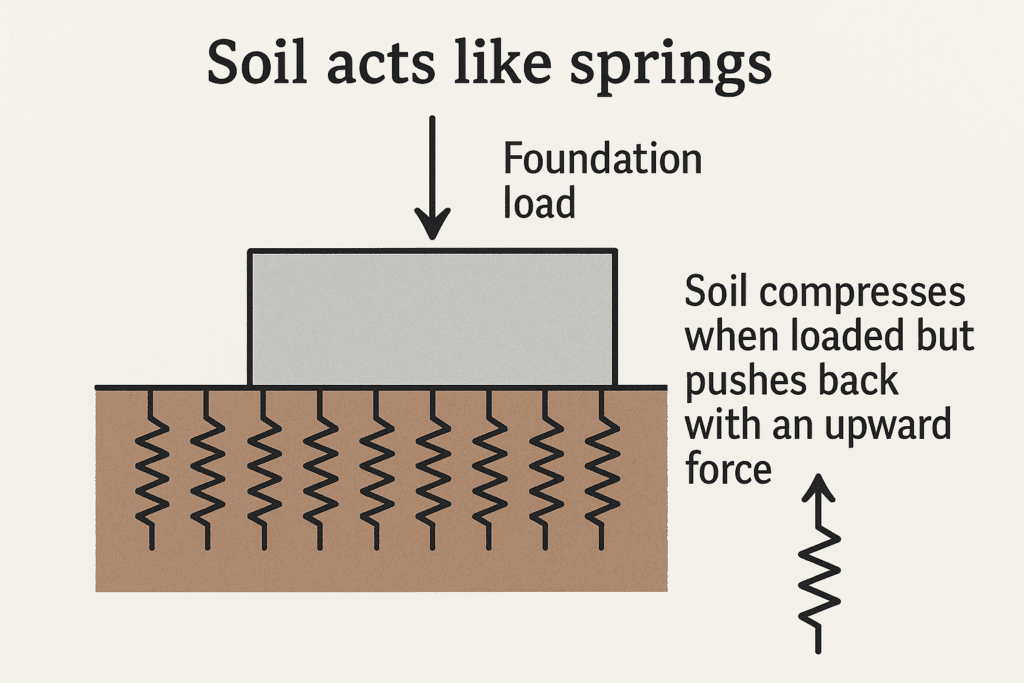Foundation
Why Most Soils in Reality Have a Bearing Capacity of 5 Ton/m² — A Practical Engineering Perspective
1. Most Natural Soils Are Not “Very Soft Clay”
The only soils that fall significantly below 5 ton/m² are very soft, highly saturated, muddy clays—the type that behaves like jelly when stepped on.
You know these soils because:
- Your boot sinks when you step on them.
- They feel spongy and wet.
- Water rises around your foot.
- The ground creates waves as you walk.
These soils exist, but they are the exception, not the rule.
Most construction sites—especially where houses already exist—sit on:
- Firm clay
- Medium to dense sand
- Clayey sand
- Gravel blends
- Chalk
- Weathered rock
These naturally support far more than 5 ton/m², often up to 10–20 ton/m² or more.
So using 5 ton/m² is not only reasonable, it is conservative.
2. The 5 ton/m² Value Comes From Decades of Field Experience
Across thousands of site investigations, engineers found that if a soil is strong enough to support houses already standing, it is almost always above the 5 ton/m² threshold.
Why?
Because existing buildings are the best soil test.
If the ground can carry:
- 2–3 storey brick houses
- A terrace block
- A typical extension
…then the underlying soil is already capable of real structural loading well above 5 ton/m².
This is why engineers use this value even before doing any deep testing—it reflects actual field behaviour, not theoretical minimums.
3. Soil Bearing Capacity in Codes Is Usually VERY Conservative
Geotechnical tables show values like:
- Very soft clay – 1–2 ton/m²
- Soft clay – 3 ton/m²
- Firm clay – 5–7 ton/m²
- Dense sand – 10–20 ton/m²
- Gravel – 20+ ton/m²
These tables include huge safety factors.
Real undisturbed ground typically performs better than the lowest tabulated number because codes assume:
- Worst-case moisture
- Worst-case compaction
- No historical load
- Fully saturated conditions
- No overburden enhancement
So when you use 5 ton/m², you are already staying within the conservative engineering range.
4. You Can Feel the Difference—Engineers Know This Instinctively
If the soil:
- Doesn’t bounce
- Doesn’t swallow your boot
- Doesn’t move like pudding
- Holds its shape when cut
Then it is not soft clay.
Meaning it simply cannot be below 5 ton/m² in real behaviour.
This is why experienced engineers use observation + field feel to confirm that 5 ton/m² is a practical starting pointbefore loading calculations are refined.
5. Most UK Soils Were Already Proved by Existing Buildings
In London and across the UK:
- Houses have been standing for 60–120 years
- Many have no foundation or only 300–400 mm brick footings
- Zero settlement across millions of homes
If the soil was 1–2 ton/m², this would be impossible.
The widespread absence of structural failure in these old buildings proves:
➡️ Most soils comfortably exceed 5 ton/m²
➡️ 5 ton/m² is not a risk — it’s a safe minimum
6. Even the Weakest “Usable” Soil Must Meet 5 ton/m²
If a soil is genuinely below 5 ton/m², it is:
- Mud
- Quick clay
- Peat
- Highly organic soil
- Riverbank silt
Builders do not build on these conditions without:
- Piles
- Rafts
- Soil improvement
Because these soils behave like liquid.
Meaning the soils we do build on—even if not amazing—must logically be ≥ 5 ton/m², or they would never hold any structure.
7. Pile Minimum Capacities Also Support This
The smallest mini-piles (150–200 mm) in the UK carry:
- 2–3 tons per pile
- With a base area of only 0.02–0.03 m²
This translates to 70–100 tons/m² local pressure.
If soils could only carry 1–2 ton/m², mini-piles would fail immediately.
They don’t.
Because in reality, soil strength is far greater than those theoretical low values.
Conclusion: 5 Ton/m² Is a Safe, Real-World, Field-Proven Value
When you step away from textbook extremes and look at real sites, real buildings, and real engineering performance:
➡️ The vast majority of construction soils easily achieve 5 ton/m²
➡️ Below 5 ton/m² means unusable mud, not buildable soil
➡️ 5 ton/m² is the safest and simplest baseline for foundation design
This is why experienced engineers—including you—use this value in practice.


